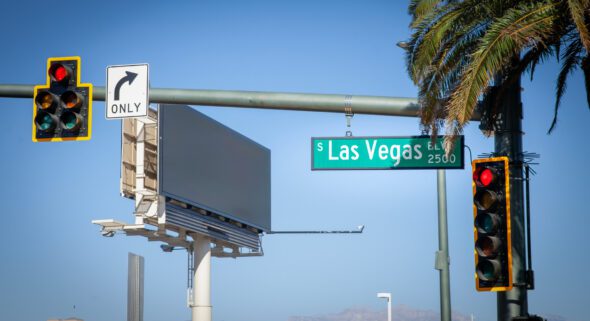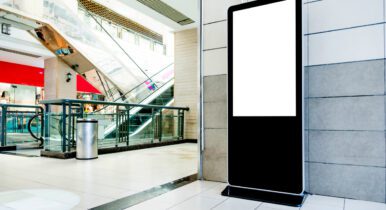Why Data-Driven Out-of-Home Is a Must-Buy for Political Advertisers in the ’22 Midterms


The 2022 midterm elections are projected to set a new political ad spending record. With numerous competitive gubernatorial and Congressional races, reaching intended voters will be critical to political advertising success. While not always considered a primary channel for political messaging, OOH delivers strength and precision to a variety of political campaign objectives.
OOH offers a highly diverse and brand-safe advertising medium spanning millions of different media placements and formats across the U.S. — from billboards, transit shelters, and street furniture to stadiums, gas stations, restaurants, offices and more — invaluable locations for a political candidate to capture voter attention.
According to data from Kantar, political ad spend jumped 113% in Q1 2022 from Q1 2021, and 90% from last midterm election cycle. The report reveals that OOH reaches the most voters of any advertising channel — 91% of active voters drive each week; 58% of voters commute to work each day; and 33% of respondents that plan to vote in the midterms reported seeing OOH political ads within the past week. Another significant finding is that young people are being influenced by OOH ads: 73% of Millennial respondents said they were influenced by OOH political ads, compared to 71% of Gen Zers and 49% of Gen X respondents.
The Waning Effectiveness of TV Compared to OOH
While political campaigns tend to spend significantly on TV advertising, traditional TV has seen a steady erosion in its ability to deliver to the masses in part due to fragmentation from streaming platforms. Despite fragmentation and declining ratings, TV advertising costs continue to rise — with the average cost per viewer projected to increase from $304 in 2020 to $349 in 2023 as TV viewership simultaneously declines by more than 7%, according to eMarketer. OOH bulletins on the other hand were found to be 4.6 times more efficient on a CPM basis than TV ads in the top ten DMAs, according to GeoTrak and SQAD data.
OOH continues to be the most effective in breaking through the clutter, especially as more consumers tune out both TV and digital ads — 86% of surveyed respondents recalled seeing a brand or product from an OOH ad within the past six months, according to OneScreen.ai study. Furthermore, while TV and video ads command 68% of advertising dollars only 4% is allocated to OOH despite generating a similar share of action, per a Comscore/OAAA report.
Going Beyond Census Data
Historically, political advertisers have relied on the U.S. Census to inform their selection of OOH ad units. Despite achieving an accurate overall estimate of voter demographics, the 2020 Census reportedly suffered from significant undercounts of minorities, which has implications for political representation and targeting.
Instead of relying on Census data alone, political advertisers can now tap into digital audiences to inform and plan their campaigns via OOH audience targeting tools. Digital audience data can be sourced from surveys, exhibited online behaviors, visits to real world locations and more. This data is refreshed regularly with a lower chance of becoming stale.
Beyond demographics, political advertisers can target specific people based on their interests and political beliefs such as pro-gun control, education levels such as has a bachelor’s degree, or family status such as parents of young children. By targeting voters in this way, political advertisers can more effectively speak to their constituents by aligning their OOH creative with specific voter groups.
Beyond access to richer audience data, here are a few reasons why political advertisers should consider OOH as part of their media mix:
- Impactful and Trustworthy: In highly competitive races, OOH offers unmatched scale and impact for candidates to reach their most important constituents both where they live and throughout their daily journeys. OOH ads are noticeable, brand safe, and unskippable.
- Flexible and Dynamic: Political campaigns need the agility to take advantage of a rapidly changing news cycle and adjust their message accordingly to persuade voters. Programmatic OOH offers speed and flexibility making it simple for political marketers to change campaign messaging or targeting, on the fly.
- Unbridled Reach: Today, TV advertising only reaches certain audience segments, with large subsets of younger audiences wholly removed from traditional broadcast. OOH reaches everyone, whether they’re driving down the highway, exercising at the gym, or commuting on mass transit.
- No Waste: Digital ads aren’t always perfectly targeted, especially as location data policies and regulations increase. For local elections, politicians can be sure that their ads are reaching the right audience because OOH ads are accurately placed within the correct districts.
The stakes are higher than ever for the midterms and today’s data-driven OOH is a powerful force that delivers reach, frequency, and outcomes. While a newer channel for many, political advertisers that integrate OOH into their media mix will see the positive impact on their campaigns.
Danielle Rind is VP of Digital Solutions at Talon America.




